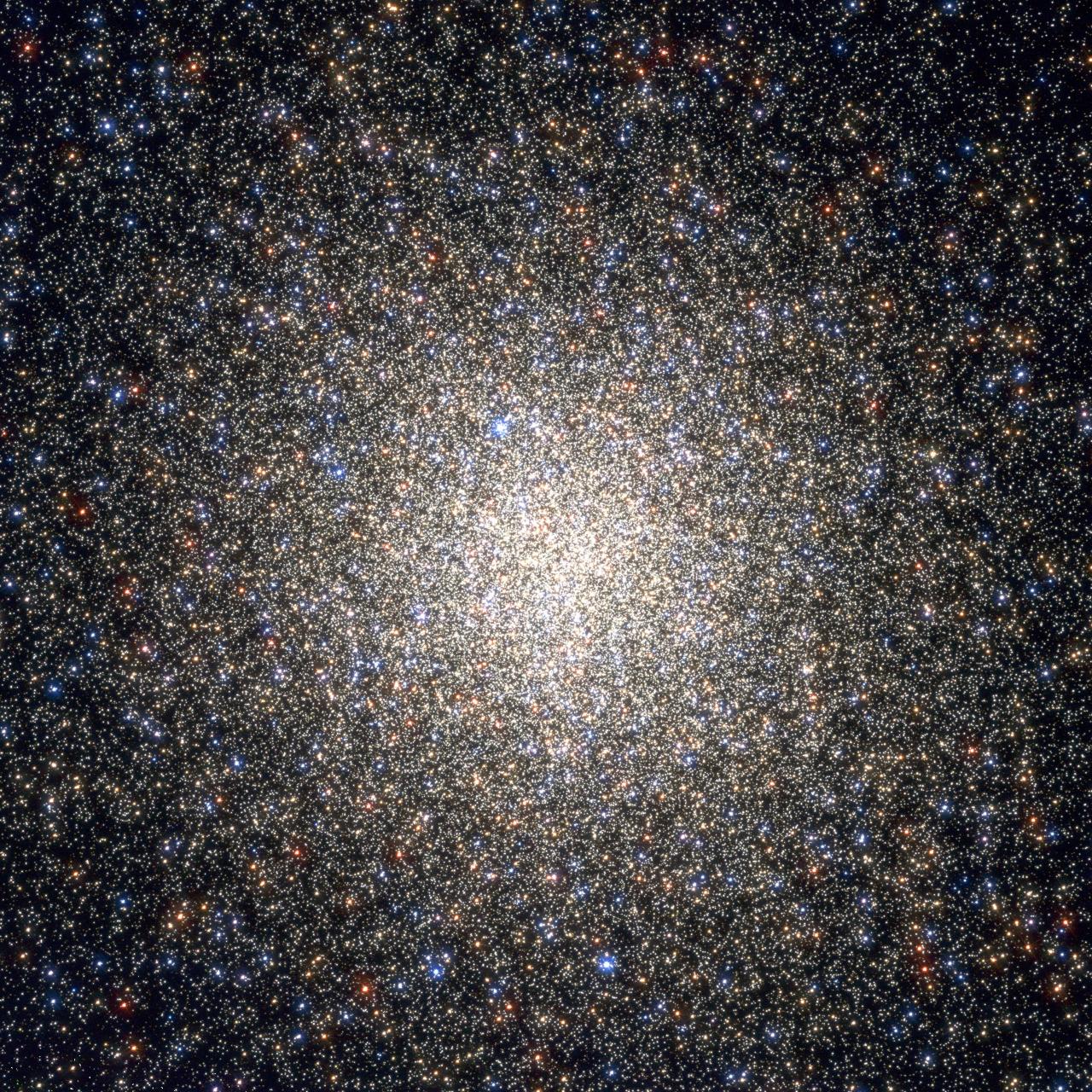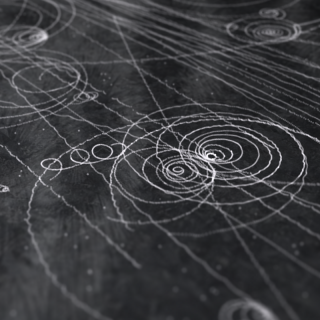Grants related:
General
The general aim of the project is to research the structure, evolutionary history and formation of galaxies through the study of their resolved stellar populations, both from photometry and spectroscopy. The group research concentrates in the most nearby objects, namely the Local Group galaxies including the Milky Way and M33 under the hypothesis that they are a good representation of the general population of galaxies in the Universe.
The project can be divided in four research lines:
I. Star formation history in the Local Group.
The goal is to characterise the spatial and temporal structure of the galaxies of the Local Group through the observations of individual stars. The fundamental aim is to derive the detailed star formation history (SFH) of a given galaxy in all its evolutionary stages, in order to determine the impact of cosmological (e.g. reionization, self-shielding) and local processes (e.g. gas sweeping by supernovas, tidal forces, stellar migration).
II. Multiple stellar populations in globular clusters.
At odds of what it is classically predicted, there is evidence that globular clusters (GC) host more than one stellar population with different chemical composition. HST photometric observations of GC show strong evidence of multiple main sequences in the CMDs. The aim of this line is to characterise the aforementioned multiple populations in GC.
III. Structure and formation of the Milky Way.
The main purpose of this research line is to study the Milky Way via by using GAIA data (spacebased), and the ESO-VVV survey (Vista Telescope). These data are going to provide a perfect opportunity to study the star formation history of the Galactic disk and bulge. In order to use GAIA and VVV data we need to adapt the tools developed by our group to study stellar populations.
IV. Stellar evolution and synthetic color-magnitude diagram.
We have developed a new stellar evolutionary library. There is the need in the scientific community to increase the reliability and accuracy in the stellar models computation using the most updated results in Physics, such as the equation of state, new opacities, and nuclear sections.
Members
Results
Milestones
- Development of the web site http://basti-iac.oa-teramo.inaf.it for the BaSTI stellar evolution library
- Obtention of near-infrared PSF photometry of the full VVV disk region (220 sq. deg between 294.7° ≤ l ≤ 350.0° and |b| ≤ 2.25°) in J and Ks bands
- Computation of a open access data base of "cromosomic maps" for all the object of the "HST Legacy Project on Globular Clusters".
- Determination of the star formation history of three Ultra-fain Dwarfs (UFD): Bootes I, Canes Venatici II y Leo IV
Scientific activity
Related publications
-
Interactions between large-scale radio structures and gas in a sample of optically selected type 2 quasars
Context. The role of radio mode feedback in non radio-loud quasars needs to be explored in depth to determine its true importance. Its effects can be identified based on the evidence of interactions between the radio structures and the ambient ionised gas. Aims: We investigate this interaction in a sample of 13 optically selected type 2 quasars
Villar Martín, M. et al.Advertised on:
62021 -
A Case against a Significant Detection of Precession in the Galactic Warp
Recent studies of warp kinematics using Gaia DR2 data have produced detections of warp precession for the first time, which greatly exceeds theoretical predictions of models. However, this detection assumes a warp model derived for a young population (few tens of megayears) to fit velocities of an average older stellar population of the thin disk
Chrobáková, Ž. et al.Advertised on:
52021 -
Exact Semianalytical Calculation of Rotation Curves with Bekenstein-Milgrom Nonrelativistic MOND
Astronomers derive MOdified Newtonian Dynamics (MOND) rotation curves using the simple algebraic rule of calculating the acceleration as equal to the Newtonian acceleration (a) divided by some factor μ(a). However, there are velocity differences between this simple rule and the calculation derived from more sophisticated MOND versions such as AQUAL
López-Corredoira, M. et al.Advertised on:
32021 -
Multiple Populations in Low-mass Globular Clusters: Palomar 13
Since the discovery of chemically peculiar stars in globular clusters in the last century, the study of multiple populations has become increasingly important, given that chemical inhomogeneity is found in almost all globular clusters. Despite various proposed theories attempting to explain this phenomenon, fitting all the observational evidence in
Tang, Baitian et al.Advertised on:
22021 -
Updated BaSTI Stellar Evolution Models and Isochrones. II. α-enhanced Calculations
This is the second paper of a series devoted to presenting an updated release of the BaSTI (a Bag of Stellar Tracks and Isochrones) stellar model and isochrone library. Following the publication of the updated solar-scaled library, here we present the library for an α-enhanced heavy element distribution. These new α-enhanced models account for all
Pietrinferni, Adriano et al.Advertised on:
22021 -
PSR B0656+14: the unified outlook from the infrared to X-rays
We report detection of PSR B0656+14 with the Gran Telescopio Canarias in narrow optical F657, F754, F802, and F902 and near-infrared JHK s bands. The pulsar detection in the K s band extends its spectrum to 2.2 $\mu$ m and confirms its flux increase towards the infrared. We also present a thorough analysis of the optical spectrum obtained by us
Zharikov, S. et al.Advertised on:
42021 -
HST Survey of the Orion Nebula Cluster in the H<SUB>2</SUB>O 1.4 μm Absorption Band. III. The Population of Substellar Binary Companions
We present new results concerning the substellar binary population in the Orion Nebula Cluster (ONC). Using the Karhunen-Loève Image Projection algorithm, we have reprocessed images taken with the IR channel of the Wide Field Camera 3 mounted on the Hubble Space Telescope to unveil faint, close companions in the wings of the stellar point-spread
Strampelli, Giovanni M. et al.Advertised on:
62020 -
Statistical analysis of Galactic globular cluster type properties
The analysis of pseudo-colour diagrams, the so-called chromosome maps, of Galactic globular clusters (GCs) permits to classify them into type I and type II clusters. Type II GCs are characterized by an above-the-average complexity of their chromosome maps and some of them are known to display star-to-star variations of slow neutron-capture reaction
Simioni, M. et al.Advertised on:
42020 -
The Hubble Space Telescope UV Legacy Survey of Galactic Globular Clusters. XX. Ages of Single and Multiple Stellar Populations in Seven Bulge Globular Clusters
In the present work we analyzed seven globular clusters (GCs) selected from their location in the Galactic bulge and with metallicity values in the range -1.30 ≲ [Fe/H] ≲ -0.50. The aim of this work is first to derive cluster ages assuming single stellar populations and second to identify the stars from first (1G) and second generations (2G) from
Oliveira, R. A. P. et al.Advertised on:
32020 -
The star formation history of the Sculptor dwarf spheroidal galaxy
We present the star formation history (SFH) of the Sculptor dwarf spheroidal galaxy based on deep g, r photometry taken with Dark Energy Camera at the Blanco telescope, focusing our analysis on the central region of the galaxy extended up to ˜3 core radii. We have investigated how the SFH changes radially, subdividing the sampled area into four
Bettinelli, M. et al.Advertised on:
82019 -
Mapping the stellar age of the Milky Way bulge with the VVV. II. Deep JKs catalog release based on PSF photometry
Context. The bulge represents the best compromise between old and massive Galactic components, and as such its study is a valuable opportunity to understand how the bulk of the Milky Way formed and evolved. In addition, being the only bulge in which we can individually resolve stars in all evolutionary sequences, the properties of its stellar
Surot, F. et al.Advertised on:
92019 -
Mapping the stellar age of the Milky Way bulge with the VVV. I. The method
Context. Recent observational programs are providing a global view of the Milky Way bulge that serves as a template for detailed comparison with models and extragalactic bulges. A number of surveys (VVV, GIBS, GES, ARGOS, BRAVA, APOGEE) are producing comprehensive and detailed extinction, metallicity, kinematics, and stellar density maps of the
Surot, F. et al.Advertised on:
32019 -
The Hubble Space Telescope UV Legacy Survey of Galactic Globular Clusters - XVII. Public Catalogue Release
In this paper, we present the astrophotometric catalogues of 56 globular clusters and one open cluster. Astrometry and photometry are mainly based on images collected within the `HST Legacy Survey of Galactic Globular Clusters: Shedding UV Light on Their Populations and Formation' (GO-13297, PI: Piotto), and the `ACS Survey of Galactic Globular
Nardiello, D. et al.Advertised on:
122018 -
The Hubble Space Telescope UV Legacy Survey of Galactic Globular Clusters. XV. The Dynamical Clock: Reading Cluster Dynamical Evolution from the Segregation Level of Blue Straggler Stars
The parameter A +, defined as the area enclosed between the cumulative radial distribution of blue straggler stars (BSSs) and that of a reference population, is a powerful indicator of the level of BSS central segregation. As part of the Hubble Space Telescope UV Legacy Survey of Galactic globular clusters (GCs), here we present the BSS population
Ferraro, F. R. et al.Advertised on:
62018 -
The Updated BaSTI Stellar Evolution Models and Isochrones. I. Solar-scaled Calculations
We present an updated release of the BaSTI (a Bag of Stellar Tracks and Isochrones) stellar model and isochrone library for a solar-scaled heavy element distribution. The main input physics that have been changed from the previous BaSTI release include the solar metal mixture, electron conduction opacities, a few nuclear reaction rates, bolometric
Hidalgo, S. L. et al.Advertised on:
42018 -
The Hubble Space Telescope UV Legacy Survey of Galactic globular clusters - XIII. ACS/WFC parallel-field catalogues
As part of the Hubble Space Telescope UV Legacy Survey of Galactic globular clusters, 110 parallel fields were observed with the Wide Field Channel of the Advanced Camera for Surveys, in the outskirts of 48 globular clusters, plus the open cluster NGC 6791. Totalling about 0.3 deg2 of observed sky, this is the largest homogeneous Hubble Space
Simioni, M. et al.Advertised on:
52018 -
The star formation history of the Sextans dwarf spheroidal galaxy: a true fossil of the pre-reionization era
We present the star formation history (SFH) of the Sextans dwarf spheroidal galaxy based on deep archive B, I photometry taken with Suprime-Cam at Subaru telescope focusing our analysis on the inner region of the galaxy, fully located within the core radius. Within the errors of our SFH, we have not detected any metallicity gradient along the
Bettinelli, M. et al.Advertised on:
52018 -
The Hubble Space Telescope UV Legacy Survey of Galactic Globular Clusters - XII. The RGB bumps of multiple stellar populations
The Hubble Space Telescope UV Legacy Survey of Galactic Globular Clusters is providing a major breakthrough in our knowledge of globular clusters (GCs) and their stellar populations. Among the main results, we discovered that all the studied GCs host two main discrete groups consisting of first generation (1G) and second generation (2G) stars. We
Lagioia, E. P. et al.Advertised on:
42018 -
280 one-opposition near-Earth asteroids recovered by the EURONEAR with the Isaac Newton Telescope
Context. One-opposition near-Earth asteroids (NEAs) are growing in number, and they must be recovered to prevent loss and mismatch risk, and to improve their orbits, as they are likely to be too faint for detection in shallow surveys at future apparitions. Aims: We aimed to recover more than half of the one-opposition NEAs recommended for
Vaduvescu, O. et al.Advertised on:
12018 -
The ISLAnds Project. III. Variable Stars in Six Andromeda Dwarf Spheroidal Galaxies
We present a census of variable stars in six M31 dwarf spheroidal satellites observed with the Hubble Space Telescope. We detect 870 RR Lyrae (RRL) stars in the fields of And I (296), II (251), III (111), XV (117), XVI (8), and XXVIII (87). We also detect a total of 15 Anomalous Cepheids, three eclipsing binaries, and seven field RRL stars
Martínez-Vázquez, C. E. et al.Advertised on:
122017



